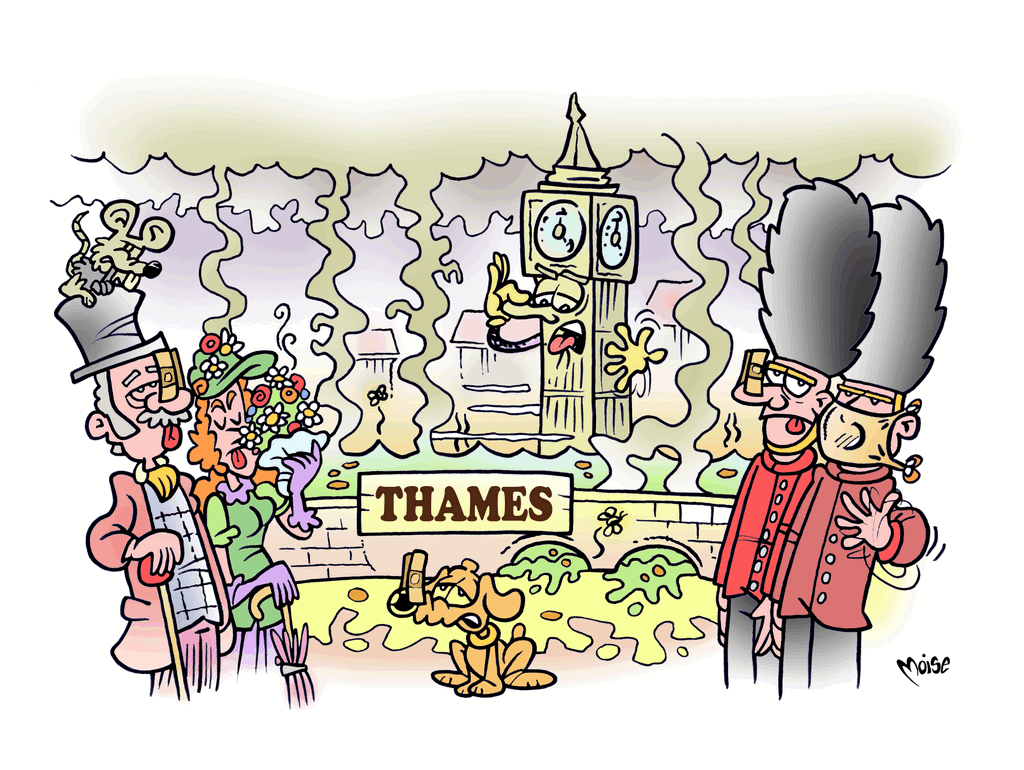
Wastewater
 How was wastewater managed before the construction of modern sewers and treatment plants? Of course, the situation has varied greatly over time, also depending on geographic and cultural contexts, but we can say that in the countryside, generally, hygiene and unpleasant odours were less of an issue compared to urban areas.
How was wastewater managed before the construction of modern sewers and treatment plants? Of course, the situation has varied greatly over time, also depending on geographic and cultural contexts, but we can say that in the countryside, generally, hygiene and unpleasant odours were less of an issue compared to urban areas.
One event, in particular, is remembered in the history of the City of London: the “Great Stink”. At that time, most human and animal excrement ended up in the River Thames, along with leftover food, animal carcasses and industrial waste.
Despite this, the river was also used as a source of water, causing frequent epidemics of cholera.
In the summer of 1858 all of London was feeling the effects of an oppressive heat wave and the sewage in the Thames began to ferment in the scorching sun. The result was a smell as offensive and disgusting as can ever be imagined. The Chancellor of the Exchequer at the time, Benjamin Disraeli, defined the river as “a Stygian pool reeking with ineffable and unbearable horror”. The smell was so strong that Members of Parliament had to even abandon Westminster and the hearings in the Court of Justice were temporarily moved to Oxford and St Albans!
It was following this event that the English Parliament decided to resolve the problem by providing the city with a modern and adequate sewage network.


